Content
Russian breeding is slowly but surely catching up with the European one: over the past few years, scientists have developed a lot of high-quality varieties and hybrids. Now the agrarian does not need to rack his brains and spend a lot of money on the purchase of foreign planting potatoes - there is a worthy alternative in the country. Potato Barin is able to compete with the most productive and resistant varieties of culture. This potato pleases with its excellent taste, presentation and unpretentiousness to the soil. Barin also has a couple of shortcomings that can be easily dealt with if you follow the rules of planting and care.
Description of the Barin potato variety is given below. Here you can find all the available information about this new, but very successful, variety.
Characteristics of domestic potatoes
The Barin potato variety entered the State Register of Agricultural Crops in 2014 - that is, the crop has been grown in Russian fields and gardens for only a few years. The "parent" of the new potato is a very popular Ural hybrid - Baron, famous for its resistance to external factors and high yield.
In the process of testing on the fields near Moscow, Barin pleased with the remarkable yield, which won the hearts of local farmers.
A detailed description of the Barin potato variety from the copyright holder - A.G. Lorkha:
- timing maturation determine as medium, although the tubers are ready to dig up within 70-80 days after germination;
- young tubers can be dug in 50 days after planting potatoes;
- the bushes are powerful, high - about 50 cm;
- stems are erect, with lateral shoots slightly deviating to the sides;
- leaves of medium size, painted in an emerald hue, have a slightly wavy edge;
- inflorescences are large, flowers are pink-violet;
- Barin's potatoes are leveled, their shape is oval;
- the peel is smooth, pale beige, rather thin;
- there are few eyes on the surface, they are shallow, the shoots are pink;
- the pulp has a light yellow tint, dense, not watery;
- the average weight of Barin's tubers is from 80 to 120 grams - potatoes can be called large;
- under each bush, from eight to twelve marketable tubers ripen, there are few small potatoes;
- the potato variety Barin has excellent taste - the flesh is tender, slightly sweetish, does not boil over;
- the starch content in potatoes is average - 13-15%;
- the master is most suitable for frying, preparing salads, soups, cooking and stewing - the purpose of the variety is table;
- the yield of the Barin variety is estimated as high and very high - about 1.5 kg from a bush, 280-300 kg are harvested from a hundred, and with proper care and sufficient nutrition, you can get 400 kg of excellent potatoes from each hundred;
- Barin's marketability is estimated by experts at 96-97%;
- tubers tolerate transportation well, are suitable for long-term storage;
- the Russian variety has excellent immunity to potato cancer and the Y virus;
- late blight of tubers and tops Barin also rarely gets sick - average resistance;
- scab and nematodes pose a serious danger to the variety - mandatory prevention is required;
- Barin's potatoes are unpretentious to the composition and type of soil, they will be able to give normal yields even on heavy clay soils (the best yield indicators will be on light loam and sandy loam).
Advantages and disadvantages
Due to the high yield of Barin potatoes, owners of small land plots and standard summer cottages can grow a sufficient amount of root crops for their own needs. Having planted several buckets of seed potatoes, it is quite possible to collect tens of kilograms of large and beautiful tubers.
Barin's potatoes are quickly gaining popularity, because the variety has a lot of advantages:
- high productivity;
- attractive appearance of tubers;
- large sizes of potatoes;
- very pleasant taste;
- early maturation;
- suitability for storage and transportation;
- good immunity;
- undemanding to soils.
Domestic potatoes have no major drawbacks. Agrarians only talk about the insignificant resistance of the Barin variety to tuber scab and susceptibility to nematodes, which cause growth retardation and leaf wilting. It is very easy to eliminate even these shortcomings: it is only necessary to treat the potato bushes with special preparations several times over the summer.
Agrotechnics
Gardeners should understand that even the best elite potato varieties need proper care and proper planting. Barin is an unpretentious variety, but for the sake of an impressive harvest, the agrarian will have to work hard.
Seat selection
Like any potato, Barin loves sunny areas in open areas. If the sun is not enough, the potatoes will develop more slowly than they should, and will begin to ache and wither. Waterlogging is also dangerous: moisture stagnation or groundwater leakage.
Soil preparation
You need to start preparing for the next season in the fall. During this period, the land on the site is dug to the depth of the shovel bayonet. After that, you can scatter fertilizers: rotted manure, bird droppings, superphosphate, wood ash. With the onset of spring heat, the fertilized soil is dug up again.
Experienced farmers recommend enriching the land with green manure (for example, mustard). Such plants are sown a couple of weeks before planting potatoes, immediately before planting the tubers, the soil is dug up along with the sprouts.
Selection and preparation of seeds
Seed potatoes of the Baron variety are best chosen in the fall. Tubers weighing up to 70 grams, the length of which does not exceed 4-5 cm, are optimal for planting. All planting material must be inspected for damage (mechanical, signs of infection or rot).
About a month before the expected planting of the Baron's tubers, it is recommended to treat it with a weak solution of manganese (about ten crystals per liter of water). After that, the potatoes are dried and placed in wooden boxes in one layer - for germination.
By the time of planting, the tubers should have thick and short shoots, the length of which will not exceed 1-2 cm.
Landing technology
Planting potatoes of the Barin variety should be as follows:
- Dig holes about 18-20 cm deep at 45-50 cm intervals.You can also plant this potato in trenches: the depth will be the same, and the potatoes are laid so that at least 45 cm remains between adjacent tubers.
- One potato is placed in each hole so that the large sprouts on the tuber "look" up.
- Now the potatoes are covered with soil. The soil should only cover the sprouts; the potatoes should not be covered with too thick soil.
- Planting ends with the fact that the ground is carefully leveled with a rake.
Care rules
Barin, like any other potato, will have to be looked after in the first half of summer. In order for the harvest of this potato variety to turn out to be a record one, you need to make a lot of effort: watering, hilling, fertilizing and processing the bushes.
All care for the Barin variety consists of several stages:
- Some gardeners underestimate the benefits hilling potato bushes. Sprinkling soil to the roots of the plant protects the tubers from overheating, minimizes the risk of contamination of the bushes with various infections, and helps to retain moisture. It is recommended to spud potatoes Barin at least twice a season. When the sprouts rise to 15 cm, the soil is raked up for the first time, a second procedure is performed after about three weeks - at this time, the mounds grow somewhat, making them even higher.
- If necessary, potato beds need rid of weeds... This must be done, because the grass impedes air circulation, becomes a medium for the development of pests and infections, and takes nutrients and moisture from potatoes.
- The Barin variety normally tolerates drought, so it often to water no potatoes. In the rainy season, you should forget about watering altogether, you just need to regularly loosen the soil, preventing the formation of a thick crust.
- For normal development and growth, the Barin variety needs at least three dressings for the season. Before flowering, the bushes can be fertilized with a urea solution (1 spoon per 10 liters of water). During the formation of buds, a glass of wood ash and a spoonful of superphosphate are bred in a bucket of water, the bushes are watered with the resulting solution. At the flowering stage, fertilization with a solution of one superphosphate is sufficient - a spoonful of the substance per 10 liters of water.
- Recommended a couple of times per season carry out preventive treatment Barin potato remedies for scab and nematodes. Spraying the bushes with fungicides will not hurt, especially if the summer is wet. Do not forget about the thunderstorm of all varieties of root crops - the Colorado potato beetle. This pest can be hand-picked or poisoned with insecticides.
Feedback
Conclusion
The Barin potato variety is relatively young, so there are few verified data on it. Despite the lack of information, domestic potatoes are gaining popularity, already today they are successfully grown not only in the Central region, but also in almost all corners of the country.
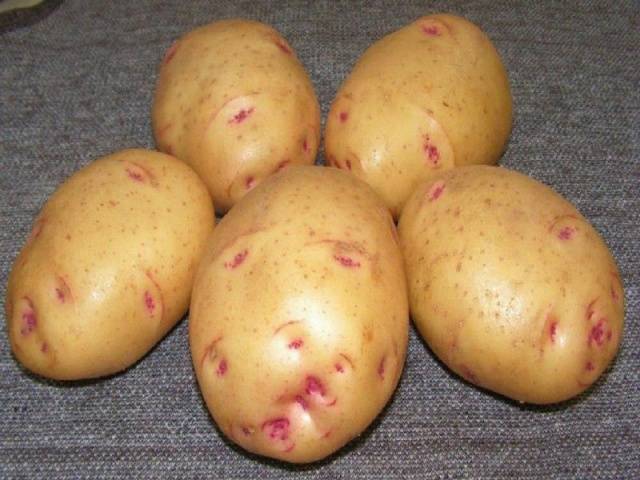
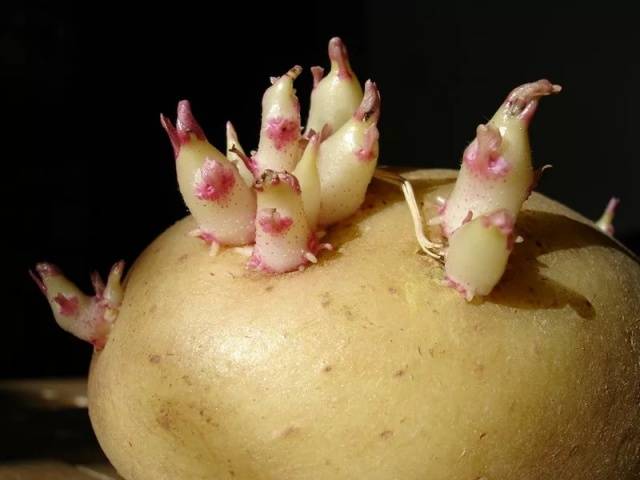

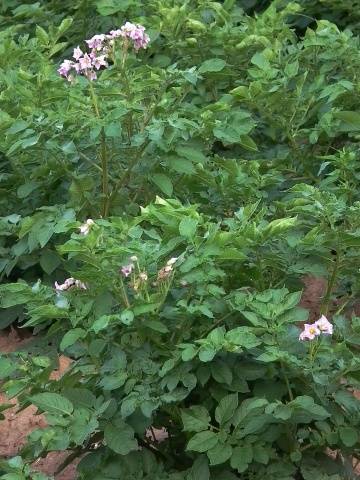
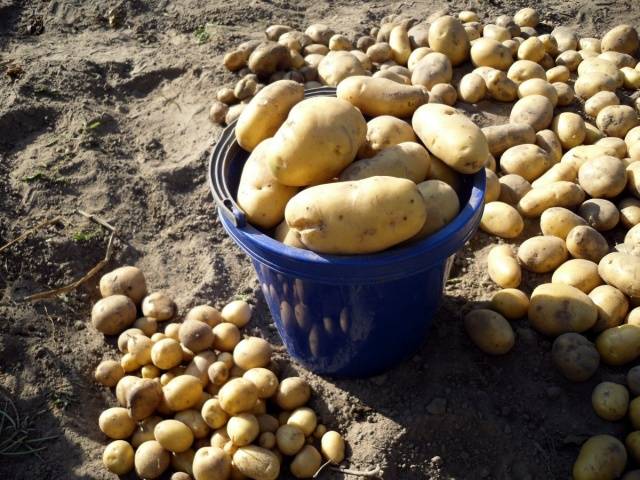
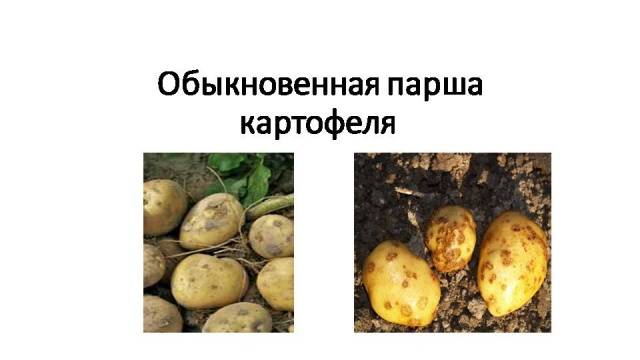
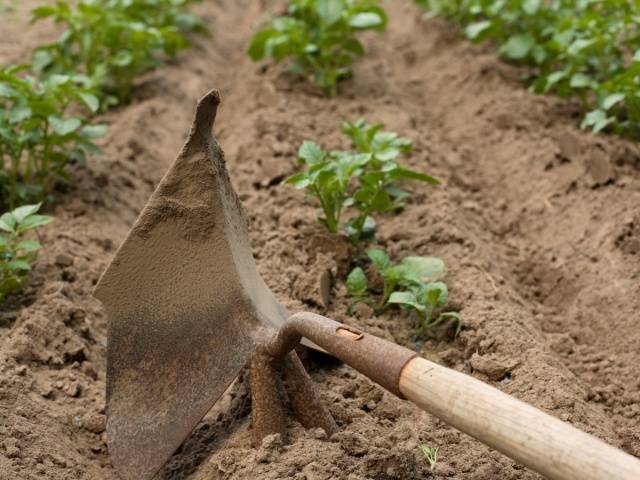
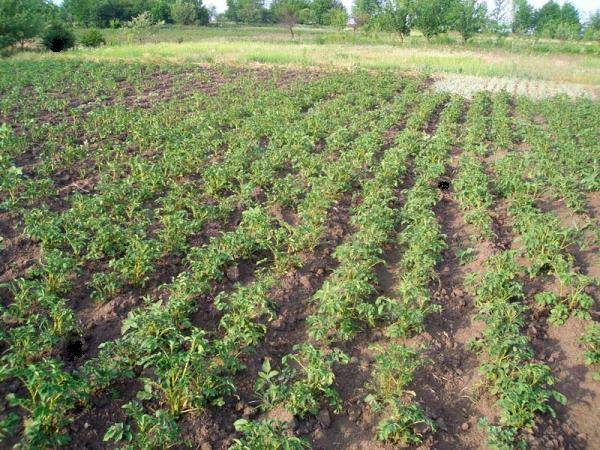
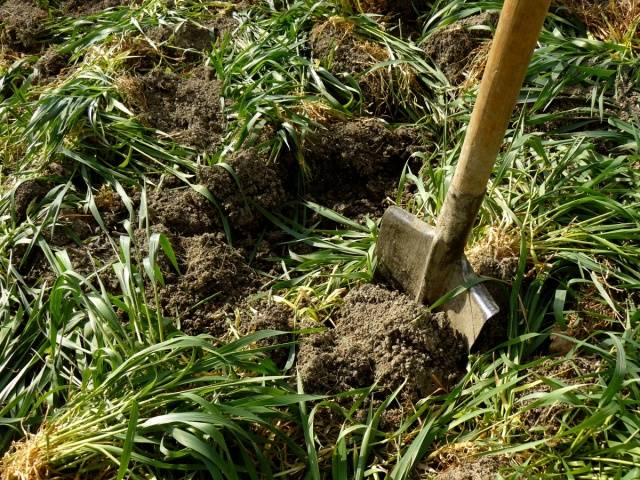

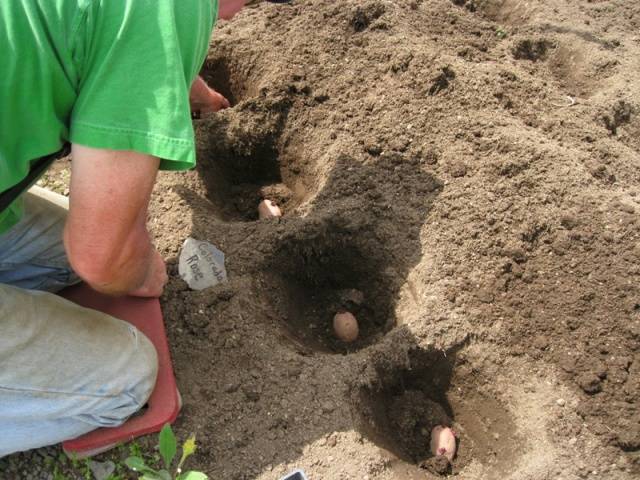
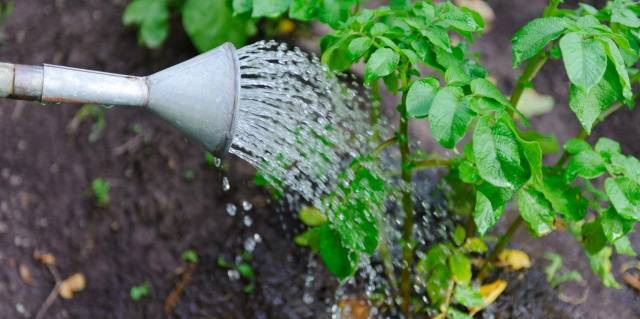

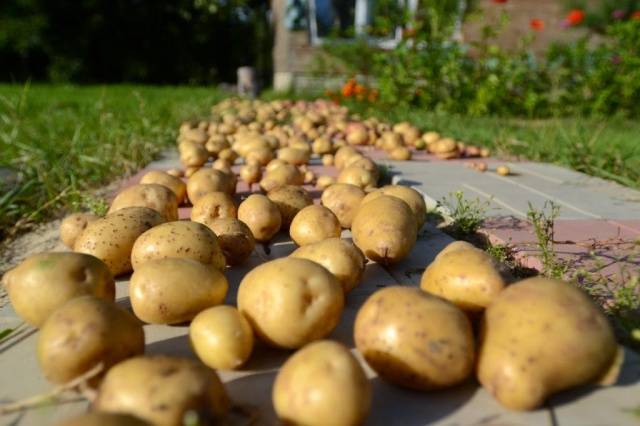









3 years ago the variety Barin was caught. And she was struck down on the spot from the very first try. I don't really like potatoes, but I eat this one with pleasure! Even in spring it is still delicious! Large, even. I'm not going to part with him !!
Hello. I bought seed potatoes Barin in the spring. First, one mesh, immediately read it, took another mesh. Planted on May 1. As a result, when they began to dig 15-20 pieces on each bush. There are 4 average pieces, the rest are small and smaller. What is this Barin.? Or they hung the wrong label in OBI. In general, I was upset. I don’t know who to believe.
Good day!
You should not draw conclusions only on one, not very successful, harvest. Firstly, this year cannot be called fruitful for potatoes. Judging by the reviews of many gardeners, the potatoes are small this year, despite the good weather conditions and regardless of the variety. Many people complain that the potatoes, which were pleasing in their size in previous years, are small this year.
Secondly, the recommended harvest dates for medium-ripened potatoes are early to mid-September. Maybe I should have waited 2-3 weeks.
Third, let's not discount the possibility of deception on the part of sellers. You can only be 100% sure that you have purchased varietal potatoes when making a purchase from a company that is directly involved in breeding varieties. Numerous stores, alas, do not give guarantees. It is not known where they get their seeds and tubers.
Fourthly, the Barin variety is relatively young. There are still very few reviews about him, and it is difficult to draw any conclusions. Perhaps there are some nuances in growing that are not indicated in the article. Quite often, gardeners pay little attention to the recommendations of the originators regarding the feeding schedule. It is not customary to feed potatoes in Russia during the season. But it is the application of fertilizers during the season that greatly affects the quality of the crop.
It is worth noting another factor affecting the yield. When growing varietal potatoes, it is necessary to follow all the recommendations for preparing the site for planting, pre-planting and preparation of tubers, following the rules of planting and care. The composition of the soil and compliance with the irrigation schedule are very important.
We advise you to plant a few Barin's tubers again next year. Perhaps the harvest will delight you.